Shennong and the Bantus in the Far East
In this article, I would like to introduce you to a god and ancient ruler of Chinese legend—Shennong.
Shennong is a very important person in Chinese history and also to Hebrew Israelite history. I will attempt to demonstrate the relationship between the ancient Chinese and the Hebrew Israelites through the presentation of correlations in historical and biblical facts. For both those who are familiar and yet to become acquainted with the legendary Shennong, you are sure to learn something new and interesting things in this blog. I will first provide some background about Shennong and then demonstrate his connections to the Bantu peoples of Africa, who have already been identified as bloodline descendants of displaced Hebrew Israelites HERE (West Africa) in a separate article, as well as HERE (East Africa).
WHO IS SHENNONG?
In order to familiarize ourselves with who Shennong is, let’s read and examine a few quotes from different sources. After reading these excerpts, it will be clear to see how important the man Shennong was in establishing Chinese culture, diet and traditional medicine. He is also credited with establishing the original Chinese monetary system as well as the introduction of different tools to the Chinese. The first source’s quote comes from an article by Dr. Subhuti Dharmananda of the Institue for Traditional Medicine. According to Dr. Subhuti,
His depictions are numerous, mostly appearing as a leaf-draped recluse.

Notice the similarity in the depiction of the Negro Blackheads, with skirts and aegis made of leaves, and the various depictions of Shennong with the same apparel
The water buffalo was used in virtually all farming activities, especially to pull plows through marshy rice fields…
As a result of his efforts, numerous herbs became routinely used for health care, and the knowledge was handed down by oral tradition for centuries…
The earliest mention of a text called Shennong Jing (Classic of Shennong) is by authors who lived during the period immediately following the fall of the Han Dynasty (220 A.D.), suggesting that it might have been compiled during the latter part of the Han Dynasty. Further, the text that comes down to us mentions governmental regulations that applied during the latter Han Dynasty, indicating that this is when it was compiled. It is thought that Shennong lived from 2737 B.C. to 2697 B.C., nearly 5,000 years ago; this is why it is common to hear that Chinese medicine has a history of 5,000 years.” – Subhuti Dharmananda, Ph.D., Director, Institute for Traditional Medicine, Portland, Oregon

The 8 main achievements of Shennong (cultural contributions to humankind: ploughing, archery, botanics-pharmacology, pottery, musical instruments, huts, weaving, agricultural cultivation)

A mural about archery of the Northern Zhou Dynasty (557-587) from Grotto 290 of Mogao in Dunhuang

“Knife money is the name of large, cast, bronze, knife-shaped commodity money produced by various governments and kingdoms in what is now known as China, approximately 2500 years ago. Knife money circulated in China between 600 to 200 B.C. during the Zhou dynasty… Knife money may also have been brought in by sea traders from the Indian Ocean.” – Knife Money
Bronzed shells were found in the Ruins of Yin, the old capital of Shang Dynasty (BC 1500-BC 1046). Bronze became a universal currency in the Zhou Dynasty.” – History of Chinese Currency

COOL FACT: Most of the Chinese characters related to money has the part “贝”,which means “shell” in English!

Left: An artifact at the Shanghai Museum from about 800-900 B.C. found in the area where Shennong is believed to have lived (Fufeng County, Shaanxi). Right: A vessel from the same time period and region (Shaanxi Province, Western Zhou Dynasty) for preparing and storing liquids, like those made from herbs.

Aside from recreational music, the valiha is also used for ritual music to summon spirits. It is considered the “national instrument” of Madagascar.

A variant instrument, the Marovany, is similar in concept but boxlike rather than tubular, and made of wood or sheet metal.

It would seem that Shennong was a Bantu from East Africa, where he got the knowledge to “invent” the Guqin in China.
Beside these eight major items, in various legends other aspects of civilization are attributed to Shennong. A legend says that it was Shennong who discovered that drinking water could be made healthier by boiling. Or take, for instance, the invention of tea drinking. In one popular Chinese legend, Shennong was drinking a bowl of boiling water some time around 2737 BC. The wind blew and a few leaves from a nearby tree into his water and the water began to change its color. The ever inquisitive and curious monarch took a sip of the brew and was pleasantly surprised by its flavor and its restorative properties. A variant of the legend tells that the emperor tested the medical properties of various herbs on himself, some of them poisonous, and found tea to work as an antidote to poison.”

The statue of Shennong is easily recognizable among the myriad of icons in Chinese temples. He is always represented as sitting, the usual way of oriental kings. His head has two horns, referring to the ancient legend that he was a human being with a buffalo head. His torso is bare and at the waist he wears a skirt of tree leaves. This is to indicate that he belongs to the age when clothes had not yet been invented, when humans did not yet know how to weave fabrics.”
Shennong advanced the culture and civilization of China in the same way that the Hyksos Egyptians and Phoenicians (both with dominant Israelite elements among them) had advanced Greek civilization in ancient times.
Not only did Shennong advance the culture of the Chinese as the Egyptians and Phoenicians did Greek civilization, but also his Bantu Israelite associations also point toward a Phoenician origin being that the Israelites were Phoenicians! Moreover, The name China seems to be derived from the Greek word for Canaan, Xvã (Chi-n-ã). Canaan is said to be the first Phoenician, so perhaps the Greeks were referring to the Phoenicians (Israelites) when they spoke of Xvã (China/Canaan).
“In historical times the Phoenicians called themselves Canaanites, and their land Canaan, “the lowlands,” the latter applying equally to the coast, and the inland highlands, which the Israelites occupied.” – The American Catholic Quarterly Review, Volume 30, PG 333
“The Hebrew word ‘kinah,’ referenced in the Shekinah pillar, means ‘purple.’ Thus, the Shekinah literally means ‘she-purple.’ The Biblical land of Canaan has the same ‘kinah’ etymology, making it the ‘land of purple.’ As a result, the merchants that came from Canaan were called the purple merchants and even traded in a powdered purple pigment.”” – Purple Shekinah, by Richard Merrick

Emergent Lingua Francas and World Orders: The Politics and Place of English as a World Language, By Phyllis Ghim-Lian Chew, PG 155
Yet another association between the Israelites Phoenicians and China can be found in relation to the Chinese calendar. Chinese history states that Shennong had also invented the Chinese calendar and a harvest festival to compliment the agriculture he taught.

The Chinese calendar developed by Shennong is a lunisolar calendar (with strong emphasis on the moon for agricultural/religious reasons).
The Hebrew Israelites originally used to used the Enochian calendar but after the Babylonian captivity, they adopted the Babylonian lunisolar calendar. This gives us a foundation to set a theory upon. If the Babylonian, Hebrew, and Chinese Calendars are all lunisolar, and if Shennong was a Bantu/Phoenician/Israelite who introduced the calendar to China, might also the harvest festival that Shennong invented in China also be of Hebrew Israelite origin as well?
“Shennong is also credited with inventing the Zhaji Sacrificial Rite (later it was called the Laji Rite), which was held at the end of each year in order to thank all the gods for enabling the harvest…” – Handbook of Chinese Mythology, By Lihui Yang, Deming An, PG 193
The Zhaji Sacrificial Rite, later known as the Laji Rite, is a thanksgiving harvest festival.
“A harvest festival is an annual celebration that occurs around the time of the main harvest of a given region… Certain religious holidays, such as Sukkot, have their roots in harvest festivals.” – Harvest Festival, Gutenburg.org
The Hebrew word sukkōt is the plural of sukkah (H5521), which means, “booth or tabernacle“. Sukkot were usually constructed as a walled structure covered with schach (plant material such as leafy tree overgrowth or palm leaves).
The sukkot dwellings of the Israelites are very similar, in both form and function, to many huts of the Bantu people. Certain East African groups lived in huts that not only resembled those of the Israelite’s sukkot but also the more oriental huts in the Far East.

It would seem very likely that all the inventions of Shennong can be attributed to his Bantu/Phoenician/Israelite origins.
“The Betsileo are of Malayo-Indonesian origin, whereas Madagascar’s population is largely mixed of Bantu African and East Asian descent. Traditionally they claim a common heritage with the Antemoro from the east coast and the Bara from further south. They traditionally lived in huts made of vegetable fiber, reserving wooden huts for the nobles, per Malagasy architectural norms. Both were often adorned with decorative motifs or even the horns of zebu.”
The interesting element of this particular Bantu groups addition of horns onto their homes furthers the associations we can make between Shennong and his Israelite origins by way of the Bantu Africans and the Levantine Phoenicians. Shennong’s mysterious description of having horns on his head would seem to described by the Bantu and Phoenician cultural/religious practices. The Israelites also worshipped the Bull at times of their transgression against the Most High God, I AM THAT I AM (AHAYAH ASHAR AHAYAH, Exodus 3:13-15).
“Putting aside the horns, which have at the same time assumed the aspect of a fork, we cannot but be struck by the resemblance of this symbol to those of the Phœnician Caducei, where the Disk seems to be supported by a conical stem.” – The Origins of the Caduceus, The Migration of Symbols, by Goblet d’Alviella, PG 232
“They have set up kings, but not by me: they have made princes, and I knew it not: of their silver and their gold have they made them idols, that they may be cut off. Thy calf, O Samaria, hath cast thee off; mine anger is kindled against them: how long will it be ere they attain to innocency? For from Israel was it also: the workman made it; therefore it is not God: but the calf of Samaria shall be broken in pieces.” – Hosea 8:4-6

“In some sources, Chiyou had certain features associated with various mythological bovines: his head was that of a bull with two horns, although the body was that of a human”
These bulls horns worn upon the heads of Shennong, the Flame Emperor, and his descendant Chiyou are also associated with the slash-and-burn agricultural technique. The presence of Slash and Burn agriculture in China as well as the Horned heads of Shennong and Chiyou are very strong evidences supporting the fact of the ancient Africa/Israelite origins of China.

“Throughout most of the region south and east of the Congo River basin, people speak some form of Bantu, a closely related family of languages associated for the most part with agricultural populations that first appeared on the southern subcontinent early in the first millennium A.D… It would appear that as they spread south, groups of farmers spread into empty areas or ones heretofore the domain of foragers, creating settlements sustained by slash-and-burn cultivation…By the seventh century related people resided throughout subequatorial Africa, practicing agricultural economies, new kinds of society, and metalworking, as well as employing domesticated plants and animals previously unknown in wild form in the subcontinent.” – The Zimbabwe Culture: Origins and Decline of Southern Zambezian States, By Innocent Pikirayi, PG 77-78


“The history of the Bantu dispersion will always involve a good deal of speculation, for the Bantu left no written records, and the remaining evidence will always remain subject to different interpretations. There seems, however, little doubt that the Bantu migrations occasioned the spread of metallurgy throughout wide areas of eastern and southern Africa. The use of iron probably enabled the proto-Bantu and Bantu people to produce tools suitable for practicing slash-and-burn agriculture in the forest. Iron tools may have enabled the Bantu to break the forest barrier. Iron weapons gave them a great military superiority over their opponents…

The spread of iron technology parallels the spread of agriculture because iron technology was an integral part of the success and expansion of agriculture

“The use of iron may have spread westward; the art of smelting was certainly known to the people of Nok in the fourth century B.C. The smith’s craft may then have spread southeastward into Bantu Africa; in all probability the Bantu used iron-tipped tools when they pioneered new land.” – The Bush Burnt, the Stones Remain: Female Initiation Rites in Urban Zambia By Thera Rasing, PG 175
Inagina: The Last House of Iron
The whole film can be viewed from parts 1-6, but it is dubbed in European Spanish. Even if you don’t understand Spanish, it is still interesting to watch the film and you are certain to learn a lot from just the visuals. This is, by far, the most beautiful and largest furnace I’ve seen:
PT 1, PT 2, PT 3, PT 4 , PT 5, PT 6


The ability to produce steel and iron tools and weapons was a skill that gave the Bantu the ability to dominate the continent of Africa quickly. The mastery of fire allowed the Bantu to master other elements such as the earth through their farming tools and slash-and-burn African savannah agricultural techniques and the mastery of other tribes of people through their development of stronger metals and weaponry. As a result of their mastery of fire and agriculture, Bantu communities grew quickly and more resources and food were required to sustain their populations. As tribal families grew, new territory was sought to provide for the increased demands which often brought conflict between less and greater nations.
The competition for resources during the Bantu expansion was fierce and many battles were fought for the domination of trade networks and territory for their respective kingdoms. This constant warfare and the need for increasingly more efficient agricultural tools provided an environment under which some of the most advanced blacksmiths and metallurgical knowledge developed. The Bantu Expansion even created the circumstances for the diffusion of this knowledge into other countries as Bantu men sought more land (As far as China) to provide for their ever-increasing populations.
Shennong and his descendant Chiyou, were both descendants of the Bantu Africans/Hebrew Israelites and it is for this reason, that they were known as the Flame Emperor and the masters of Fire. The same knowledge of fire that allowed the Bantu to create iron tools for agriculture and weapons of war also allowed Shennong to “invent the plow” in China. It should rather be said that Shennong introduced the plow to China, being that an ancient patriarch of the Israelites had already invented the same plow that Shennong is credited for in Chinese legend.
“1) The Plough. He devised an implement – a plough with a handle – for tilling the land and preparing it for cultivation. This implement has been used by Chinese farmers for a very long time, around 7-8 thousand years. He invented also the axe, the hoe, and other implements, and taught people how to use them.”
In our attempt to demonstrate the connection between Shennong, the Bantu Africans, and the Israelites, the plough helps us begin to see that association more easily. Discovering the true origin and inventor of the plough will give us a better understanding of the associating between the Chinese and Bantu/Israelites. According to the Biblical records of the Hebrew Israelites, the technology of the ox-driven-plough was invented by the patriarch Abraham when he was young and still known as Abram.
In the separate article, ABRAHAM AND THE WISDOM OF THE EGYPTIANS, we discussed how Abraham, the grandfather of Jacob/Israel (the father of the Hebrew Israelites), had eventually departed from his hometown, Ur of Babylon (the land Chaleeans/modern Iraq) and eventually visited Egypt, before settling in the land of Canaan. While in Egypt, Abraham made the Egyptians acquainted with many parts of mathematical, astronomical and scientific learning that they were previously unaware of. As a result, the advances in Egyptian agriculture can also be attributed to the wisdom Abraham brought from the fertile crescent’s most powerful nation at the time—Babylon the land of Shinar.
Shortly after Abraham’s time, his descendants, the Israelites, would enter Egypt again, bringing a new wave of civil advances to Egyptian society during the Hyksos Era.

History also demonstrates that the Israelites who left Egypt carried much of the Egyptian culture with them wherever they migrated and they had a particular affinity for Bull/Baal worship. The historical reality of this Biblical truth can be partially reflected in the history, culture and expansion of the Bantu people’s of Africa.
As we have already discussed earlier in this article, the Bantu Expansion across the whole of Africa (A GIGANTIC CONTINENT) was made possible by their advanced knowledge of metalworking and agriculture.
These advances provided them the ability to create an environment where population was well provided for and thrived. As populations of both people and domesticated animals (wealth) increased, so did the need for new land. This desire drove the Bantu expansion across Africa and their knowledge of metalworking and agriculture allowed them to create a supply to meet the growing demand.
“The expansion was caused by the development of agriculture, the making of ceramics, and the use of iron, which permitted new ecological zones to be exploited.” – Bantu expansion, Wikipedia

As the Bantu moved into new areas, they continue to share and build upon their knowledge base of metalworking and agriculture. Shennong’s many contributions to the advancement of Chinese civilization would seem to have their origins with the Bantu peoples as their expansion seems to have reach as far as China. However, what evidence, if any, exists that can help confirm these associations? Could the some of the Israelites really have left Egypt to populate other areas of the African continent through the Bantu expansion and eventually have migrated to China? Let’s look into more information about Shennong.

A Western-Han painted tomb tile showing an armed Negro warrior riding a dragon, one of many creatures in Chinese mythology
It is very interesting to note that the Han Chinese, being the largest ethnic group in the world, all claim Shennong/the Yan Emperor as their forefather. This is a bold claim especially being that the Yan Emperor Shennongshi was not only considered to be a legendary figure but also a god! It is also very interesting to note the Chinese claim of descent from Shennong in relation to his possible Bantu/Israelite origins. According to the Holy Bible, seed and nationhood his passed from father to son. Scientifically, this can be traced through the Y-chromosome haplogroup.
Shennong is agreed to be the Yan Emperor and the Yan Emperor is claimed to be one of the patrilineal ancestors of ‘all Chinese’ which brings us too an interesting point. If Shennong/The Yan Emperor was a Bantu himself, would that not make ‘all Chinese people’ or at least the ‘Yan Huang’ people Bantu as well (along the patrilineal line of descent)? The following video link provides evidence that ‘all Chinese people’ indeed have DNA origins in Africa. This points towards the Bantu origins of the Chinese. The research that came to these conclusions was performed by Chinese scientist and researchers:
Despite an attempt to prove the independent development and origin of Chinese people, the conclusion supports the Bantu origin of Shennong and the Chinese. Moreover, understanding the association between the Bantu and the Chinese also helps us to better understand the strange description and depiction of Shennong (and his descendant Chiyou) as having a horned head like the Minotaur.

Many Bantu peoples, who are descendants of the ancient Israelites, in keeping with the pagan worships of ancient Babylon and Egypt, had a habit of venerating the Bull.
“They made a calf in Horeb, and worshipped the molten image.” –Psalm 106:19
“And Aaron said unto them, Break off the goldenearrings, which are in the ears of your wives, of your sons, and of your daughters, and bring them unto me. And all the people brake off the golden earrings which were in their ears, and brought them unto Aaron. And he received them at their hand, and fashioned it with a graving tool, after he had made it a molten calf: and they said, These be thy gods, O Israel, which brought thee up out of the land of Egypt.” – Exodus 32:2-4
“So I turned and came down from the mount, and the mount burned with fire: and the two tables of the covenant were in my two hands. And I looked, and, behold, ye had sinned against the Lord your God, and had made you a molten calf: ye had turned aside quickly out of the way which the Lord had commanded you.” – Deuteronomy 9:15-16

“Also in Horeb ye provoked the LORD to wrath, so that the LORD was angry with you to have destroyed you.” – Deuteronomy 9:8
“Notwithstanding they would not hear, but hardened their necks, like to the neck of their fathers, that did not believe in the Lord their God. And they rejected his statutes, and his covenant that he made with their fathers, and his testimonies which he testified against them; and they followed vanity, and became vain, and went after the heathen that were round about them, concerning whom the Lord had charged them, that they should not do like them. And they left all the commandments of the Lord their God, and made them molten images, even two calves, and made a grove, and worshipped all the host of heaven, and served Baal. And they caused their sons and their daughters to pass through the fire, and used divination and enchantments, and sold themselves to do evil in the sight of the Lord, to provoke him to anger. Therefore the Lord was very angry with Israel, and removed them out of his sight: there was none left but the tribe of Judah only. Also Judah kept not the commandments of the Lord their God, but walked in the statutes of Israel which they made. And the Lord rejected all the seed of Israel, and afflicted them, and delivered them into the hand of spoilers, until he had cast them out of his sight.” – 2 Kings 17:14-20
The biblical excerpts above provide evidence of the Israelite association with the Bantu people. The verses of scripture explain that the Israelites chose to worship the calf/bull image, giving it credit for what the God of Israel had done for his people. This of course angered the God of the Israelites and he then allowed them to be removed out of their homeland. The Israelites chose to practice the customs of the other nations they lived amongst instead of the customs of their forefathers. Thus the Israelites, later known as the Bantu, adopted the worship and veneration of the bull/Baal. It is interesting to note that, just as the Israelites allowed Aaron to create the Golden Calf image for them to worship, the Bull image is often used amongst the priesthood of many African tribes to venerate the African medicine men.

Pende Chief Kwilu with Beaded Crown, Democratic Republic of the Congo, Africa


Buli people of Builsa, Ghana


Nok people of Kaduna State, Nigeria

Kadugli-Nuba People of Sudan, Africa
Many of the Bantu people left Africa, for various reasons (trade, conquest, seeking refuge, servitude), in search of new lands. These migrations resulting from the Bantu expansion brought waves of Israelites into the East in places such as India and even China (EAST AFRICAN MIGRATION). These Bantu/Israelites people obviously brought with them the same pagan Bull worship with them into all the places the travelled.

Bison-Horn Headdress of the Maria Tribe, Chattisgarh, India
It is also interesting to note that the biblical record states that the High Priest, Aaron, made a molten image. This clearly implies the Israelite’s mastery of fire, just as the Bantu and the Yan Emperor of China were also known for. A molten image is one created from molten metal. In order to turn metal into a molten state, allowing it to be poured and cast, the metal must be heated to extremely high temperatures. The Bantu Africans are known to have created clay furnaces in very ancient time periods that could heat fire to temperatures that could not only produce iron but also steel.

Israelites in Africa produced steel 2000 years before it was ever produced in Europe. Moreover, they produced it with all natural materials and a clay furnace. Image taken from Jet Magazine Dec 21, 1978, Page 56
“The issue of innovation features prominently in studies of pre-colonial African metalworking. In the 1980s, Schmidt and Avery (1983) advanced the hypothesis that East African iron smelters practiced the technique of preheating the air in the furnace before smelting began, thereby raising temperatures to produce high-carbon steels. This preheating technique is central to the blast furnace method prevalent today, and its postulation emphasized the high technical skill of traditional African metallurgists.” – The Oxford Handbook of African Archaeology, edited by Peter Mitchell, Paul Lane, PG 140
“The Haya (northern Tanzania) carbon steel pre-heated furnace discovered by Prof. Peter Schmidt and professor of engineering Donald H. Avery of Brown University, reported in the Science Magazine of September 22, 1979 that Africans produced steel 2,000 years before Europe. The furnace reached temperatures of 1800C, some 200C and 400C higher than the highest reached in European cold blast bloomer.” Shaping the Society Christianity and Culture: Special Reference to …, Volume 2, By Pastor Stephen Kyeyune, PG 111
The Tree of Iron: PT 2, PT 3, PT 4
“According to the Song dynasty history book Lushi (路史), Chiyou’s surname was Jiang (姜), and he was a descendant of Yandi. According to legend, Chiyou had a bronze head with metal foreheads.” – Chiyou, Wikipedia
“They have turned aside quickly out of the way which I commanded them: they have made them a molten calf, and have worshipped it, and have sacrificed thereunto, and said, These be thy gods, O Israel, which have brought thee up out of the land of Egypt.” – Exodus 32:8
However, it was this same mastery of fire that caused the Israelites to forget their true ancestry, becoming lost in chasing after the customs of the nations that surround them. The Israelites would eventually completely forget their Israelite heritage, choosing rather to adopt new customs which cause their God to allow them to remain lost in all the places they wandered into and would later became enslaved in. The scriptures said that the Israelites would be removed into all kingdoms of the earth, which would also include China.
“How shall I pardon thee for this? thy children have forsaken me, and sworn by them that are no gods: when I had fed them to the full, they then committed adultery, and assembled themselves by troops in the harlots’ houses. They were as fed horses in the morning: every one neighed after his neighbour’s wife. Shall I not visit for these things? saith the Lord: and shall not my soul be avenged on such a nation as this?” – Jeremiah 5:7-9
“And I will cause them to be removed into all kingdoms of the earth, because of Manasseh the son of Hezekiah king of Judah, for that which he did in Jerusalem.” – Jeremiah 15:4
“My God will cast them away, because they did not hearken unto him: and they shall be wanderers among the nations.” – Hosea 9:17
“And thou, even thyself, shalt discontinue from thine heritage that I gave thee; and I will cause thee to serve thine enemies in the land which thou knowest not: for ye have kindled a fire in mine anger, which shall burn for ever.” – Jeremiah 17:4
“My people hath been lost sheep: their shepherds have caused them to go astray, they have turned them away on the mountains: they have gone from mountain to hill, they have forgotten their restingplace.” – Jeremiah 50:6
“My sheep wandered through all the mountains, and upon every high hill: yea, my flock was scattered upon all the face of the earth, and none did search or seek after them.” – Ezekiel 34:6
“And it shall come to pass in that day, that the Lord shall set his hand again the second time to recover the remnant of his people, which shall be left, from Assyria, and from Egypt, and from Pathros, and from Cush, and from Elam, and from Shinar, and from Hamath, and from the islands of the sea.” – Isaiah 11:11
“Behold, these shall come from far: and, lo, these from the north and from the west; and these from the land of Sinim.” – Isaiah 49:12
SINIM – H5515 – Thorns
- a people living at the extremity of the known world; may be identified with the inhabitants of southern China
- Çîynîym, see-neem’; plural of an otherwise unknown name; Sinim, a distant Oriental region:—Sinim.
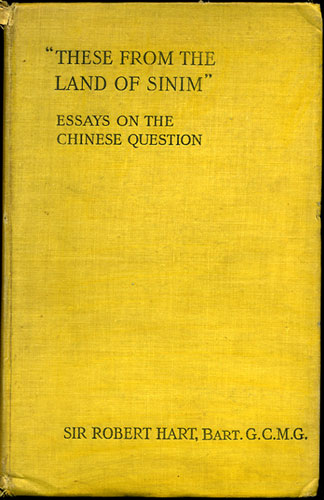
Sir Robert Hart, the author identifying China as Sinim, was a masonic knight of the Grand Cross Order of St. Michael and St. George. It seems that high level masonic initiates are aware of Biblical history
The historical record of the Holy Bible states that the lost sheep of the Israelites, the Most High god’s people, would be scattered into ALL KINGDOMS and even specifically states that they would one day return to Israel back from Sinim—China.
“Isaiah 49:12 in the KJV:
“Behold, these shall come from far: and, lo, these from the north and from the west; and these from the land of Sinim.”
Isaiah 49:12, Chinese Union Version:
“看哪,這些從遠方來;這些從北方、從西方來;這些從秦(原文作希尼)國來。”
The KJV transliterates “סינים (sinim)” as “Sinim”. The Chinese Union Version translates “סינים (sinim)” as “秦國 (Qin Country)” (with an in-text note of the Hebrew transliteration).
“Qin Country” is the country of the Qin dynasty – China. Since the establishment of the Qin (“Chin” or “Sin”) dynasty in 221 BC, the large Far East nation has been called “China” or “Sina.” Some translations (NIV, ESV) refuse the reading, “סינים (sinim)” as found in the Masoretic text. These modern scholars assume that Isaiah could not have referred to China because “Sinim” came to mean “China” only after 221 BC, hundreds of years after the life of Isaiah. During Isaiah’s life (8th century BC), the Qin state was just a small state among hundreds of other states in the region. However, if Isaiah was able to prophetically call the future king Cyrus by his name (Isaiah 44:28, 45:1), it would not have been unusual for Isaiah to have referred to the name of a future nation.” – KJV Today.com
In fact, Dunhang’s Mogao Caves in China provide much evidence of the presence of Negroes in the Far East.

Dunhuang Cave mural of Negro Horn blowers in China
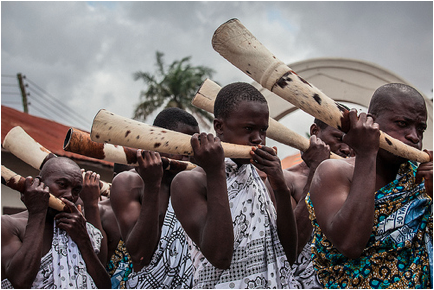
Cape Coast Mensoun horn blowers. These Horns are reminiscent of the Israelite Shofar and also look like the horns being blown in the picture above from Dunhuang, China.
Moreover, without having to make the connection between Israelite and Bantu, other scholars have documented the presence of actual Israelite tribes in China.
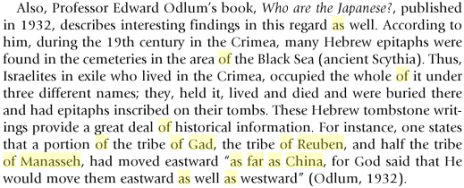
Rediscovering Japan, Reintroducing Christendom: Two Thousand Years of Christian History in Japan, By Samuel Lee, PG 13
It would now seem quite evident that Shennong, the Flame Emperor of China, had definite connections with the ancient Israelites by way of the Bantu peoples of Africa. We’ve discovered that modern Han Chinese claim Shennong as one of their progenitor and in fact Chinese DNA connects them to Bantu Africans as well. However, we have yet to discuss Shennong’s title as Divine Farmer. Obviously, the mastery of fire by Shennong and his descendants allowed them to make the tools that Shennong introduced to China but could all the other agricultural practices in China also have Bantu/Israelite origins as well?
“Shennong is among the group of variously named heroic persons and deities who have been traditionally given credit for various inventions: these include the hoe, plow (both leisi style and the plowshare), axe, digging wells, agricultural irrigation, preserving stored seeds by using boiled horse urine, the weekly farmers market…”

Hills in Northern Tigray, Ethiopia, are terraced with a series of small dams

Terraced crops of Rwanda, Africa



Rice Terraces Field Farming Village, Longsheng, Guangxi, China

Terraced Fields in Vietnam

Terraced Rice Field in Chiangmai, Thailand
After understanding Shennong’s strong Bantu associations, it makes it more apparent that it is very probably that his various agricultural inventions and advances in China were developed from the rich agricultural tradition and knowledge of the Bantu people. It was the Bantu/Israelites who migrated to China and brought the knowledge of civilization with them. The Betsileo are a group of east African Bantus that we will use to illustrate this.




Madagascar Rice Fields of Africa

Terraced fields of Dira Yeme, Tanzania, Africa.

Terraced rice patties of Madagascar

Through travel on trade routes over the ages, either as Merchants, Warriors, or Slaves/Servants, the people of East Africa found themselves in the Far East.

Of course they brought their culture, customs and religious beliefs along with them. The Bantus knowledge of metallurgy, blacksmithing, as well as agricultural and animal husbandry helped to advance the civilizations they came into contact with. It was these advances to Chinese civilization, introduced by Shennong, that led to him being venerated as the Divine Farmer and Emperor of China. To this day, many temples exist where Shennong is worshipped as a god for his contributions.

Shennong Temple in Taiwan — where he is worshiped under the names King Yan, God of Five Grains, Shennong the Great Emperor, the Ancestor of Farming, Great Emperor of Medicine, God of Earth, and God of Fields

A statue of Shennong, 6 meter high, in the countryside of Xinpu, northern Taiwan.
So, Shennong, was an Israelite and provides evidence of an ancient Israelite presence in China. However, if Shennong and the other article written about his descendant Chiyou do not provide satisfactory evidence, more thoroughly documented evidence of the Israelite presence can be found in the article Lost Tribes on The Silk Road and The East African Israelites of Zanjiland East Africa to find details on more recent historical waves of the Israelite presence in China and the Far East.
We must remember that Israelites are scattered throughout all kingdoms of the earth and Most High is calling them back from all the places he scattered them. Chinese Israelites and those who desire to worship the Most High God, I AM, of the Hebrew Israelites (Exodus 3:13-15) in spirit and in truth no matter your nationality, it’s time to return to follow the laws and Holy days of our Creator.
“But Zion said, The Lord hath forsaken me, and my Lord hath forgotten me. Can a woman forget her sucking child, that she should not have compassion on the son of her womb? yea, they may forget, yet will I not forget thee.” – Isaiah 49:14-15
To gain further details on the Israelite presence in China and the Far East in general, please continue reading through the following links:
Question comments concerns?
Contact: NasiResearch@Instruction.com
OTHER RELATED TOPICS
The Bantu Branch of Africans are Hebrew Israelites pt 1
The Bantu Branch of Africans are Hebrew Israelites pt 2
Black Buddha Israelite & The Israelite Buddhist
The East African Israelites of Zanjiland
The Israelite Fire Nation: Chiyou and the Battle of Zhoulu
Indigenous Peoples of the Americas and Caribbean are Israelites


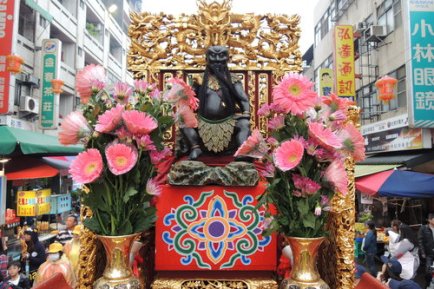










































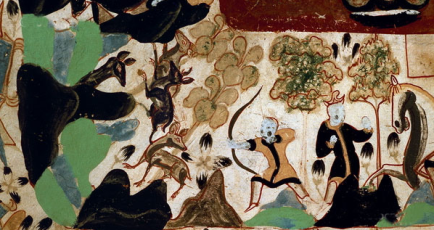










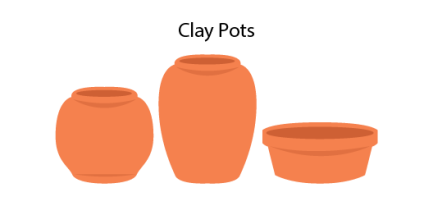




















































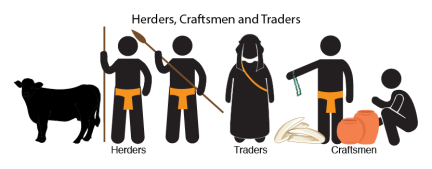
















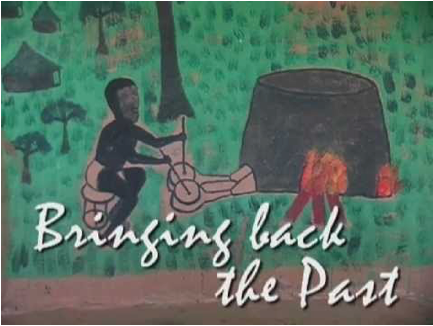






































Thankfulness to myy father who told mee concerning this web site, thjis weblog is in fact amazing.
LikeLiked by 1 person
Everyone loves what you fellows are now up to. Such great work and coverage! Keep up the fantastic work friends, I’ve you guys to my own blogroll.
LikeLike
I like this site very much, Its a rattling nice situation to read and incur information. “What is called genius is the abundance of life and health.” by Henry David Thoreau.
LikeLike